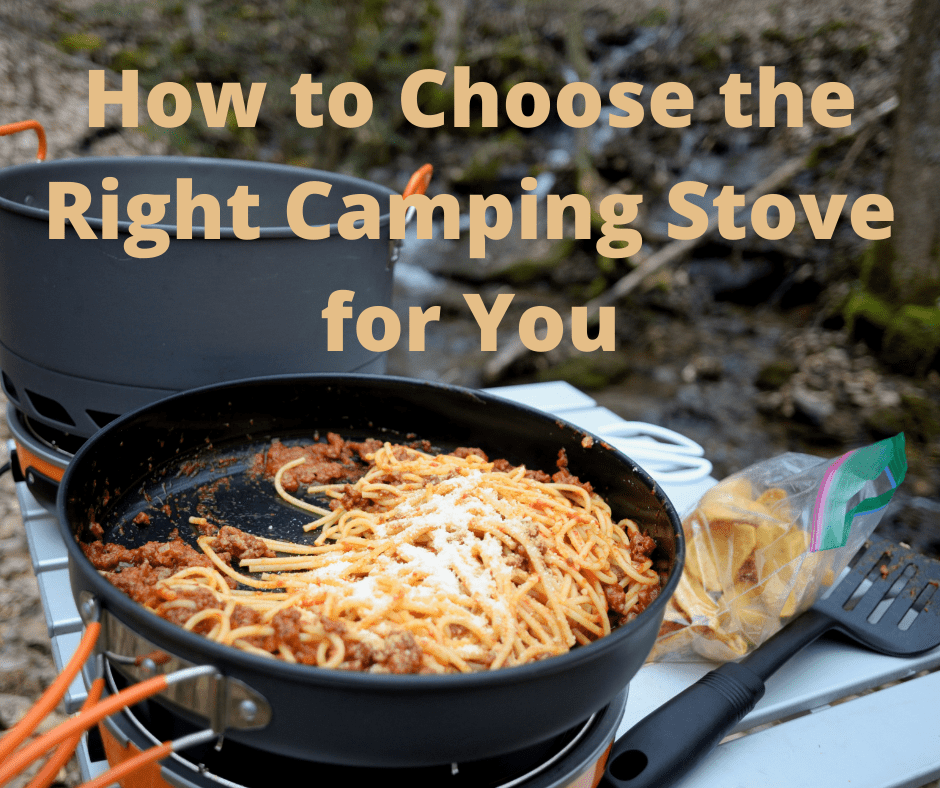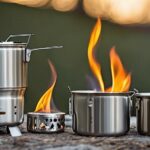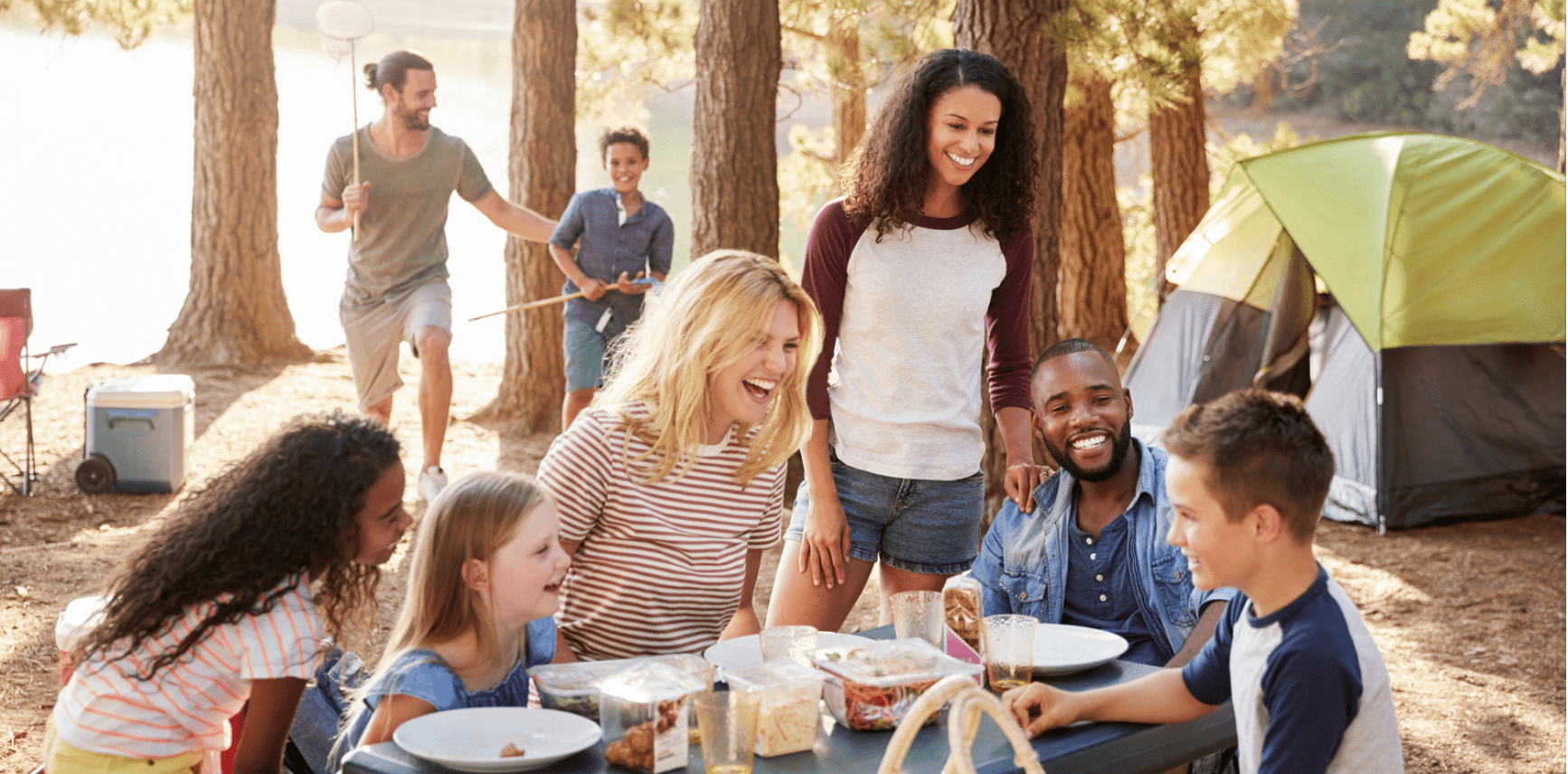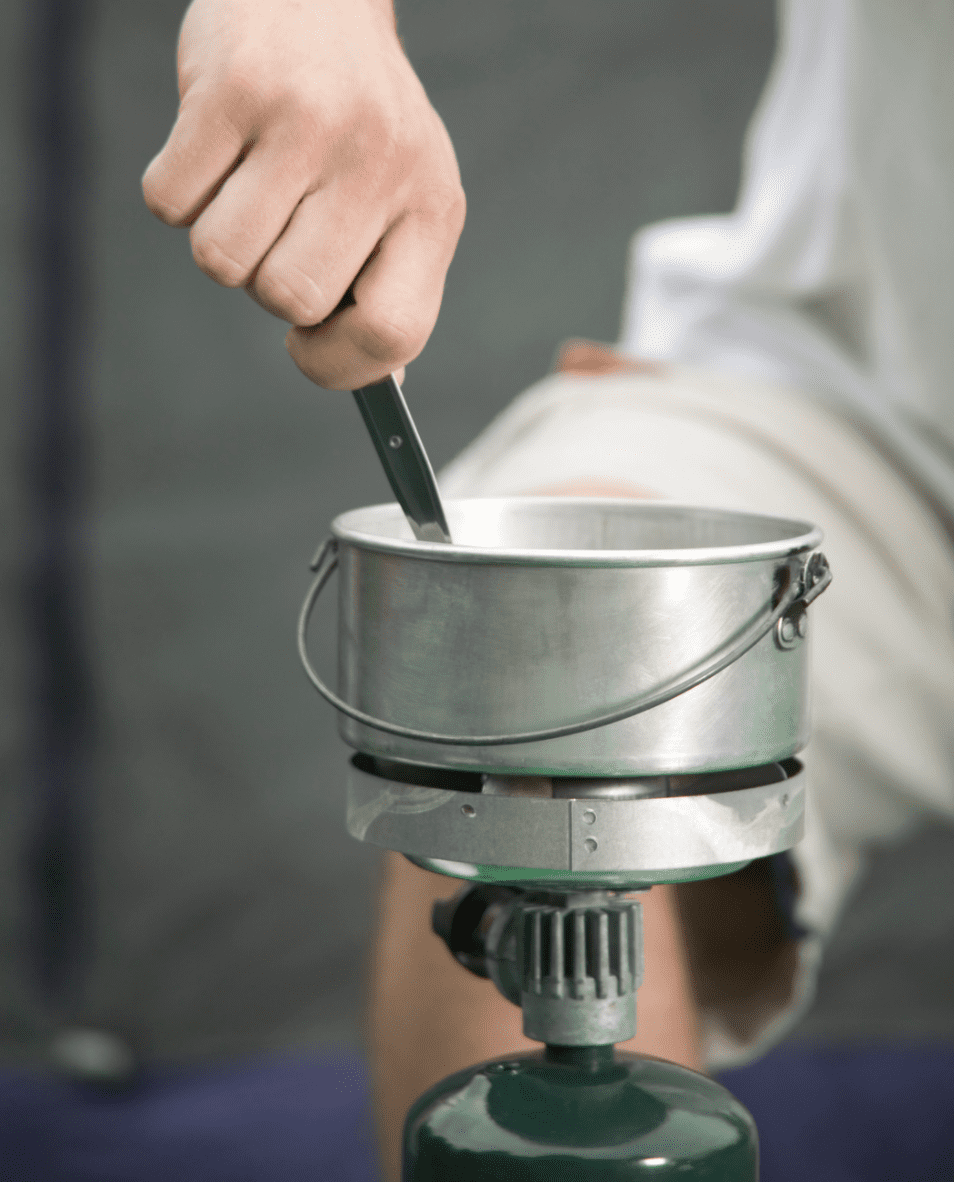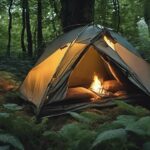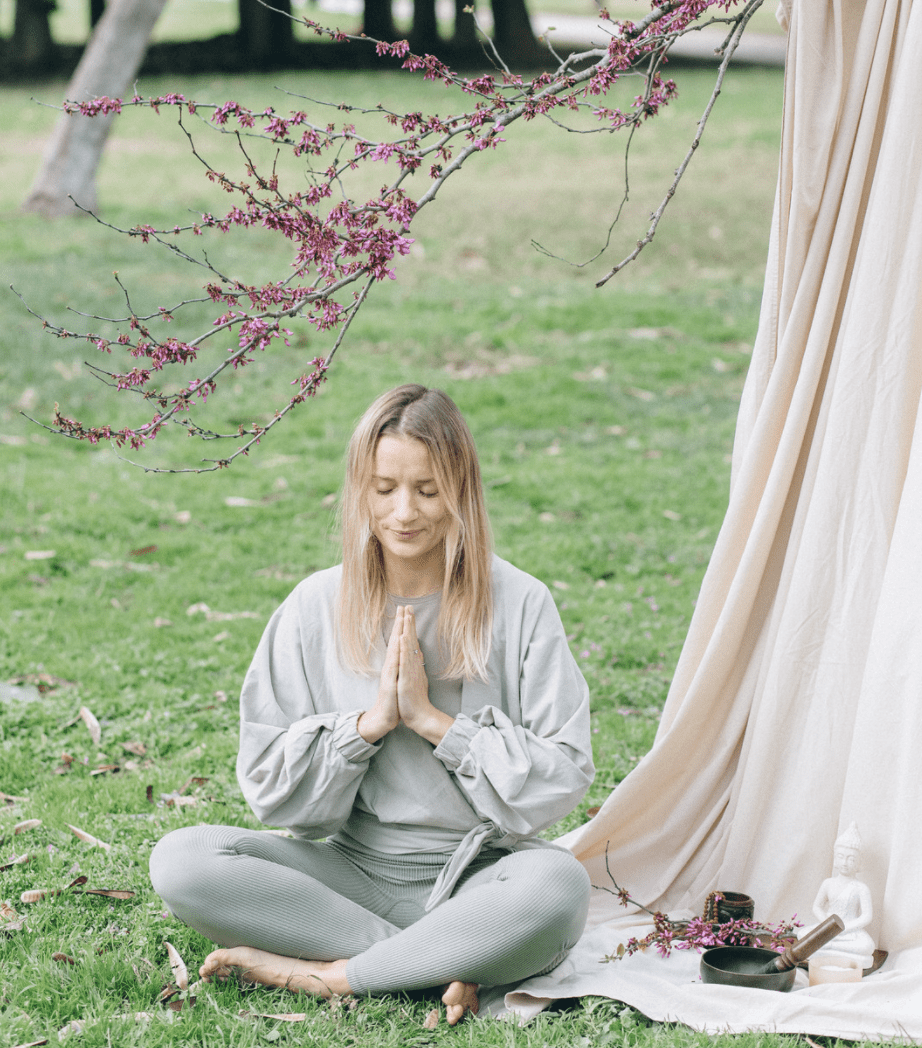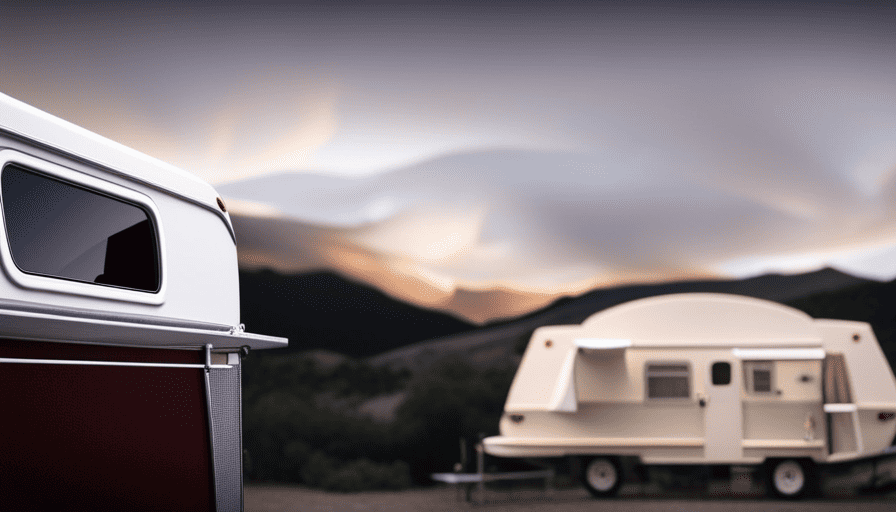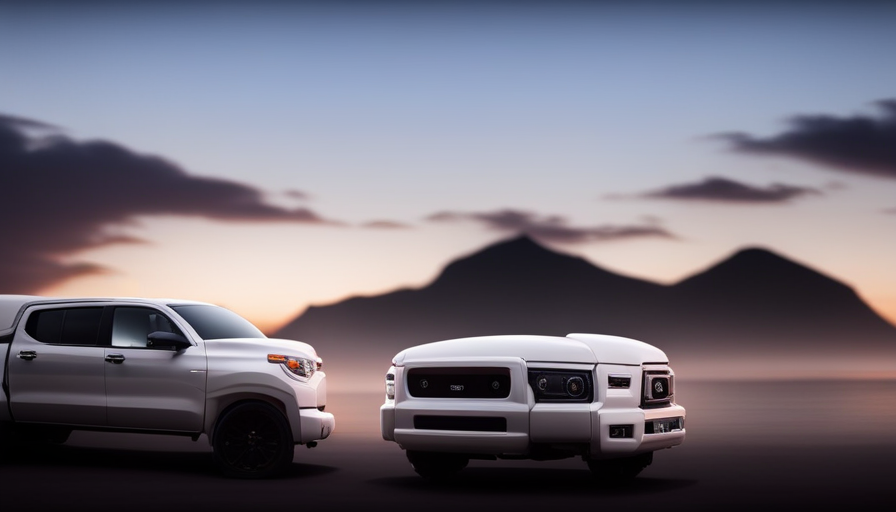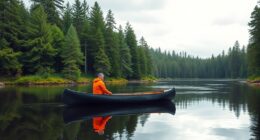When camping, there are many factors to think about, especially when it comes to meal preparation. Are you thinking of cooking over a campfire, or will you be using a stove?
While campfires are more traditional, stoves are becoming more and more popular because they’re more convenient and leave less of a footprint on the environment. This blog post will discuss the different types of stoves available and help you choose the right one for you!
Stoves and Camping
Once upon a time, campfires were the primary way to cook while camping. However, as more and more people have begun to enjoy the wilderness experience, cooking on stoves has become the more ecologically responsible choice. Stoves leave no scarring fire rings, no charred wood scattered around, and no reduction in vital deadwood from the environment.
Plus, with so many people using campfires, firewood has become a scarce resource at many campsites. In addition to being more environmentally friendly, cooking on a stove also offers some practical advantages.
It is easier to control the heat of a stove, making it simpler to cook complex meals. Stoves also tend to be more fuel-efficient than campfires, meaning that you can pack lighter and save space in your vehicle. Whether you are cooking for one or feeding a large group, stoves offer a convenient and sustainable way to enjoy a meal in the great outdoors.
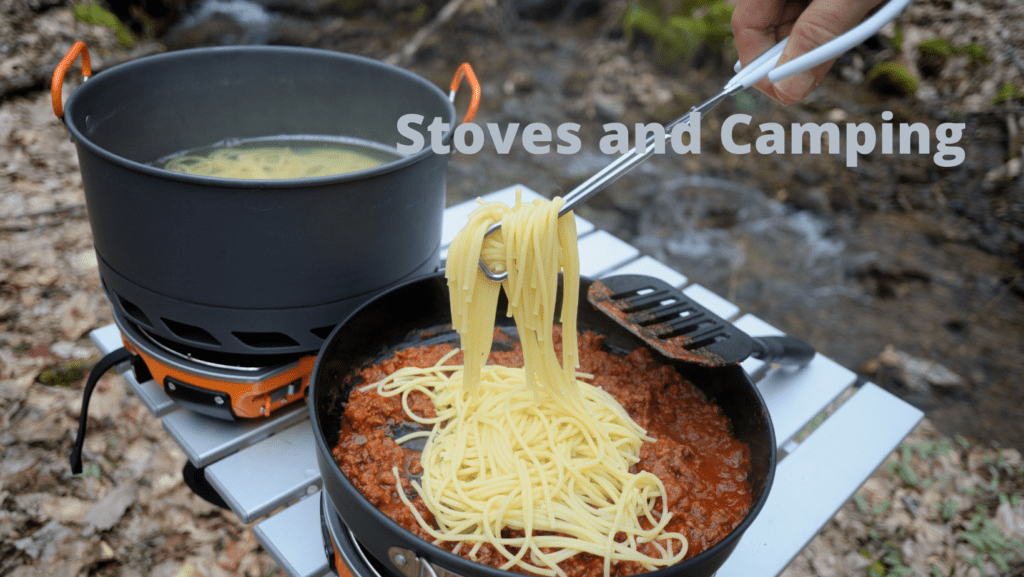
When choosing a stove, the first decision you need to make is what fuel to use. The most common options are liquid fuel and pressurized canister fuel. Liquid fuel stoves are typically cheaper and easier to find, but they can be heavier and more difficult to use. Pressurized canister fuel stoves tend to be more expensive, but they are much lighter and easier to operate.
Ultimately, the best stove for you is the one that best meets your needs and preferences. If you plan on doing a lot of backpacking, for example, you might want to choose a pressurized canister fuel stove, even if it costs a bit more. But if you’re mostly car camping, a liquid fuel stove might be the better option. Consider your needs carefully before making a decision – it’s an important one!
When choosing a stove for your next camping trip, you’ll need to weigh the pros and cons of different fuel types. White gas stoves are a popular choice because they tend to burn hotter than other types of stoves, making them ideal for boiling water quickly.
They can also be pressurized with an external pump, which can be helpful in high-altitude conditions. However, white gas stoves require regular priming, and the pumping can be a bit of a hassle. In addition, units tend to require more frequent cleaning and maintenance than other types of stoves.
Butane/propane stoves are less convenient to use in cold temperatures and when a cartridge is nearly empty. You turn on the gas and light them, but because cartridges are self- pressurized, efficiency and heat output drop. As a result, you may find yourself having to constantly adjust the flame or running out of fuel sooner than you’d like.
Additionally, these types of stoves can be less reliable in general, as they are prone to malfunctioning in extreme temperatures. Ultimately, while butane/propane stoves may be more convenient to use in some situations, they are not the best choice for everyone.
Be Cautious
When camping, it is important to be aware of the potential dangers posed by your stove. Never light a stove in a tent, as this can lead to a fire.
Similarly, never allow children to operate a stove unsupervised. If you are using a new stove, make sure to ask a salesperson to show you how to safely light and maintain it before leaving the store.
By following these simple guidelines, you can help ensure that your camping trip is safe and enjoyable for everyone involved.
Fuel For Your Stove
Before you can choose the right stove, you need to consider what kind of trip you’re going on. Will you be cooking for one or two people or a large group? Are you planning on doing any baking? Will you be doing any extended cooking, or just boiling water for freeze-dried meals? Once you have a good idea of your needs, you can start narrowing down your options.
If weight is a major concern, a liquid fuel stove might be the best option. If you’ll be doing a lot of cooking, a solid fuel stove will likely be more efficient. And if ease of use is your top priority, then a gas stove might be the way to go. Ultimately, there is no perfect stove for every situation. But by carefully considering your needs, you can find the stove that’s ideal for your next trip.
Stoves come in all sorts of shapes and sizes these days. You can get them with electronic ignition and a battery-powered fan to add glow to the coals on the solid fuel stove. There are two-burner, single-burner, micro, macro, and portable stoves. You can even get them with a built-in oven.
Some stoves have a glass door so you can see the fire burning inside. Stoves are made from all sorts of materials including cast iron, steel, and ceramic. Some even have a built-in water reservoir for boiling water or cooking pasta.
There are so many choices when it comes to stoves these days that it can be hard to know which one to choose. But whatever stove you choose, you’re sure to enjoy the warmth and comfort it provides on those cold winter nights.
It can be easy to get overwhelmed when planning a camping trip. There are so many things to think about, from what type of tent to bring to what food to pack. However, the best thing to do is to take a deep breath and relax. Once you have a better idea of what you will be doing on your trip, it will be easier to make decisions about what gear you need.
For example, if you are planning on backpacking or trekking, you will need to make sure that you have a lighter-weight single-burner stove. On the other hand, if you are going car camping or base camping with a larger group, a two-burner stove would be a better option.
Choosing the Stove Size & Decide on Fuel
When it comes to camping stoves, there are different main types of fuel: white gas, butane, and propane. Each type has its own advantages and disadvantages.
- White gas burns hot and clean, making it ideal for cooking. However, it is only available in the United States and Canada.
- Butane is more widely available internationally, but it doesn’t perform as well in cold temperatures.
- Isobutane and butane/propane blends offer a higher octane performance than butane alone, making them a good choice for camping in colder climates.
While backpackers have a number of different fuel options available to them, propane and kerosene are two of the most popular choices.
- Propane is now available in cartridges that are larger and heavier, making it ideal for single-burner stoves. However, propane is not widely available internationally.
- Kerosene, on the other hand, is available almost anywhere in the world. Although it can be tricky to prime and light, kerosene burns with a clean flame.
Additionally, kerosene produces a heat output that is as good as white gas. Ultimately, the best fuel for a backpacker will depend on their individual needs and preferences.
- Denatured alcohol is making a comeback of sorts because it burns so cleanly and quietly and is virtually explosion-proof; however, it generates much less heat than pressurized or liquid gas fuels.
- For this reason, some campers and hikers are now using solid fuel stoves, which utilize twigs and pinecones.
These stoves have several advantages: they are easy to find and use; store-bought fuel is unavailable or impractical to carry in the needed quantities; dry wood is available and legal to use, and they produce little to no smoke.
However, you must be prepared to tinker and fidget with the flame, albeit a very hot one. Additionally, if you are using a solid fuel stove in an area where there is no wood, you will need to bring your own fuel. This can be daunting, but if you are prepared, it can be a great way to save money and fuel.
If you’re looking for a reliable and easy-to-use stove, I recommend going with a pressurized gas canister fuel stove.
These stoves have electronic ignition, so you won’t have to deal with liquid fuels or try to get the right amount of pressure. Plus, they’re very easy to set up and take down. The only downside is that they can be a bit expensive, but they’re worth it if you want a hassle-free experience.
Selecting a Stove Model
There are a lot of factors to consider when choosing a stove for camping.
First, you need to decide what type of fuel you want to use.
- Gas is the most popular choice, but it can be expensive.
- Wood is cheaper, but it can be hard to find dry wood that will burn well.
- Charcoal is another option, but it can be messy.
Once you’ve decided on a fuel type, you need to choose a stove that is the right size for your needs. If you’re only cooking for one or two people, a small stove will be sufficient. But if you’re cooking for a large group, you’ll need a larger stove.
You also need to consider how easy the stove is to set up and takedown. Some stoves are very simple and can be set up in just a few minutes, while others are more complicated and may take longer.
Finally, you need to think about how much money you’re willing to spend on a stove. There are many different models available, and the price can vary widely. By taking the time to consider all of these factors, you can be sure to find the perfect stove for your next camping trip.
When choosing a stove, boiling times are often listed by manufacturers as a means of comparison. However, these should be reviewed skeptically, the same way you look at sleeping bag temperature ratings.
The main thing to consider is how much fuel you will need to bring in order to maintain your desired cooking time. If you’re looking to save weight and space, a smaller stove may be a better option. However, if you’re planning on cooking for a group, you’ll need a stove that can accommodate multiple pots and pans. In addition to size and weight, other features to consider include the type of fuel it uses, the simmer control, and the windscreen.
As an experienced camper knows, there are many factors to consider when choosing the right camping stove. With so many different types and brands on the market, it can be difficult to know where to start. However, one important factor to consider is a stove’s operating efficiency.
If you’ve ever tried to boil water over an open fire, you know that it can be a frustrating experience. The wind always seems to blow the flames just when you get the water to boiling, and then the whole process starts over again.
But there’s no need to suffer through this anymore – there are a few simple steps you can take to make sure your water boils quickly and efficiently. First, invest in a good windscreen. A windscreen will help to protect your fire from the wind, allowing the flames to build up and providing a steady source of heat.
Second, use a pot that is blackened for better heat absorption. Black pots absorb heat more effectively than lighter-colored pots, so your water will boil faster. Finally, make sure your pot has a tight-fitting lid. A lid will help to prevent heat from escaping, meaning that less fuel will be needed to maintain the boiling temperature.
Many variables can affect a stove’s efficiency, including the operator’s familiarity with the stove, the quality of the fuel, the type of pot, the cleanliness of the stove, wind conditions, air temperature, beginning water temperature, altitude, and more. By taking all of these factors into account, you can ensure that you choose a stove that will meet your needs and help you enjoy your camping trip to the fullest.
Take Care of your Stove
If you’re planning a backpacking trip, one of the most important things to consider is how you’ll cook your meals. While there are many different types of camping stoves to choose from, getting the most heat from your stove requires a little care.
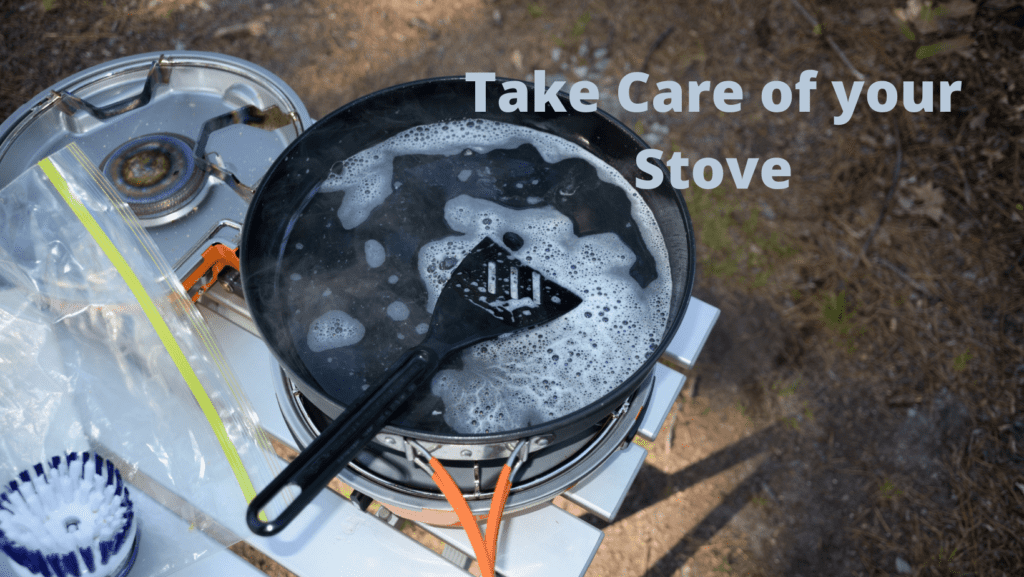
Store Your Stove
The following are tips for improving stove efficiency: Always store a stove and fuel away from food, such as in a side pocket of a pack. Many manufacturers offer padded sacks or special stove cases for this purpose. This will help to protect your food from contamination in case of a spill.
When setting up your stove, make sure that the fuel line is not kinked or blocked. This can prevent the flow of fuel and cause the stove to work less efficiently.
Also, be sure to clean the burner heads regularly to remove any dirt or debris that may have accumulated. Following these simple tips will help ensure that your stove works at peak performance and keeps you well-fed on your next backpacking adventure.
Test Your Stove at Home
As any experienced hiker knows, a stove is an essential piece of gear for any backpacking trip. Not only does it provide a way to cook hot meals, but it can also be used to boil water for drinking and hygiene purposes. However, stove care can often be overlooked in the excitement of planning a hike.
That’s why it’s important to take some time to test-fire your stove at home before heading out into the wilderness. This way you’ll know that it works and can familiarize yourself with its quirks and features. Additionally, if you encounter any problems, you’ll be able to seek help from a specialty store rather than trying to troubleshoot in the middle of your hike.
Water and Debris Can Clog a Fuel Line
Any stove, whether it runs on gas, kerosene, or liquid fuel, needs to be well-maintained in order to function properly. One of the most important maintenance tasks is to keep the fuel lines clear. Water and debris can easily clog a fuel line, preventing the stove from igniting or causing the flame to be weak and erratic.
To prevent this, always use a fuel funnel with a small screen to prefilter the fuel going into your stove. Also, before filling a fuel bottle, check it for debris and water. By taking these simple precautions, you can keep your stove running smoothly for years to come.
Never Use Old Fuel
If you love spending time outdoors, then you know the importance of having a reliable camping stove. After all, a stove is essential for cooking meals and boiling water while you’re away from home.
However, even the best stove will eventually break down if it’s not properly cared for. One of the most important stove care tips is to never use old fuel.
Fuel that has been stored in a stove’s fuel tank for more than a few months begins to break down, producing impurities that can clog a stove. As a result, it’s important to empty your fuel tank and refill it with fresh fuel before each camping trip.
By following this simple tip, you can help ensure that your stove will work when you need it most.
Conclusion
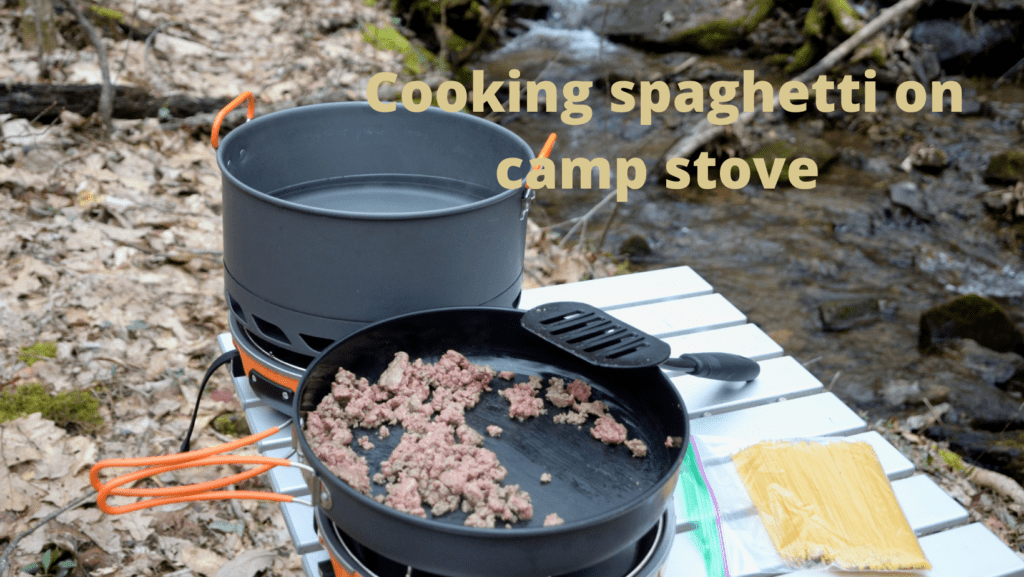
Camping stoves are a convenient way to cook food while camping, and there are a variety of different types available to choose from. The most important factor in choosing the right stove for you is determining what type of fuel it uses. Liquid fuel stoves, such as white gas, are more efficient than those that use pressurized canister fuel, such as butane or propane.
Another important factor to consider is how easy the stove is to use and maintain. Be sure to read the instructions carefully before using your stove, and always test it at home before taking it on a camping trip. Additionally, be sure to clean the burner heads regularly and keep the fuel lines clear to prevent clogging. By following these simple tips, you can ensure that your stove will work when you need it most.
Benefits of Using a Camping Stove
There are several benefits of using a camping stove:
- They’re more efficient than campfires, so you’ll save time and energy.
- They’re easy to use and maintain.
- They’re lightweight and portable, so you can take them anywhere.
- They leave no trace, so they’re environmentally friendly.
Now that you know everything there is to know about camping stoves, it’s time to hit the trail! Be sure to bring along your trusty stove, and you’ll be sure to have a delicious meal waiting for you at the end of the day.
Camping Stove FAQ
Now that you know how to choose the right camping stove for you, it’s time to start planning your next backpacking adventure. But before you hit the trail, be sure to check out our FAQs below for more information on camp stove use and maintenance.
What are the Different Types of Camping Stoves?
There are three main types of camping stoves: liquid fuel, canister fuel, and wood-burning. Liquid fuel stoves use white gas or kerosene, canister fuel stoves use butane or propane, and wood-burning stoves burn wood pellets or twigs.
How Do I Use a Camping Stove?
To use a camping stove, first, make sure that the area around you is clear of any combustible materials. Then, open the fuel valve and ignition switch, and press the igniter button to light the stove. Adjust the flame as needed using the control knob.
How Do I Maintain a Camping Stove?
To maintain a camping stove, empty the fuel tank and refill it with fresh fuel before each trip. Additionally, be sure to clean the burner heads regularly and keep the fuel lines clear to prevent clogging. Finally, store your stove in a cool, dry place when not in use.
Do I Need a Camping Stove?
While campfires are traditional and romantic, they’re not always practical or safe. In some areas, wood is scarce or unavailable, and in others, campfires are simply not allowed. In these cases, a camping stove is the best way to cook food and boil water.

